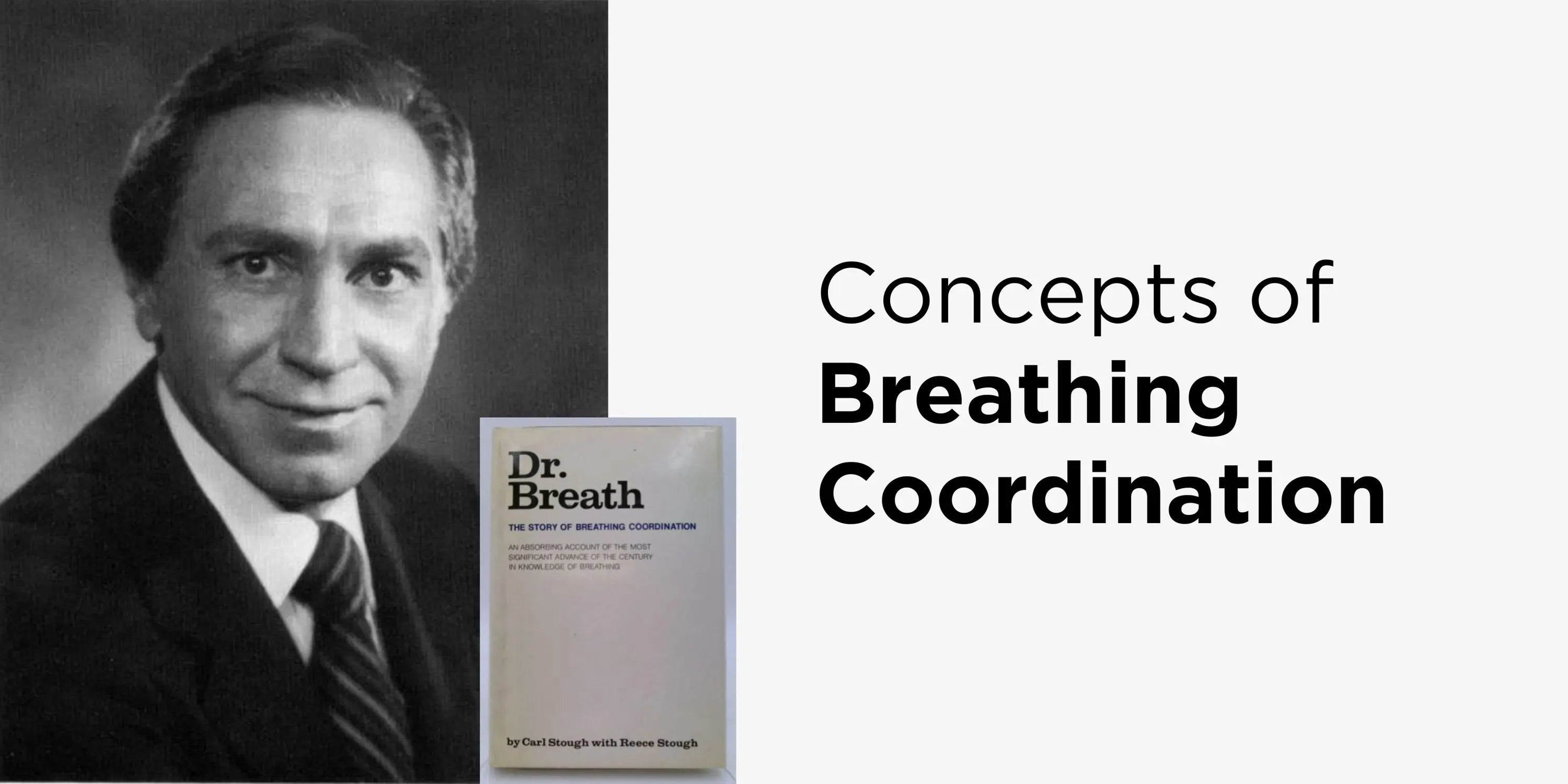Carl Stough's Concepts of Breathing Coordination, Respiratory Faults, and Accessory Breathing Muscles
Carl Stough opened my eyes to the concept of breathing coordination.
Watching him work on people gave me deep insights related to what I learned to call the natural breathing reflex, or Rosetta Stone of the breath.
The breathing reflex must be experienced, like chocolate must be tasted.
The Natural Breathing Reflex and Accessory Breathing Muscles
Ideally, breathing should be a natural, unobstructed wave from the knees to the top of the jaw. This action must be supported/allowed by a flexible spine.
Movement techniques do well with the overall body coordination of balance and weight-bearing efficiency; however, the breath is rarely addressed as a separate and unique component.
Too often, neighboring accessory breathing muscles get in the way of the breathing action when they should be supportive but still somewhat isolated. We use key insights around breathing coordination, balance sequencing, and integration in our work.
Common Respiratory Faults
Respiratory faults are more common than most people realize. Some easily observed examples are:
- Flared or sunken, misshapen ribs
- Overly bent spines
- Caved-in chests
The bottom of my sternum used to go noticeably inward and looked like a divot or sort of mid-chest “pothole”, aka pectus excavatum.
Other faults may appear as ribs that go in during inhalation or go out during exhalation, or paradoxical diaphragm movement, where the diaphragm expands and contracts front and back simultaneously. These issues may arise in people with polio, but they can also develop in anyone.
Don’t Just Breathe, Breathe Optimally.
Learn MoreThe Problem of Accessory Breathing Muscle Over-Activation
Most people I have worked with show over-activation of accessory breathing muscles. This means the breathing muscles that support the primary breathing muscles, but overreact and get in the way.
Imagine trying to sign your name while 2-5 people “help” you at the same time. Each has a different idea of what your signature should look like. That’s what happens when accessory muscles interfere with breathing.
This accessory breathing muscle activation is made more evident when the person takes a deep breath; the collar bone and or shoulders rise, or the neck muscles bulge out. In extreme cases, like emphysema, the whole body stiffens just to gasp for air.
The Voice as a Window into Breathing
One way to detect unbalanced breathing (UDB) is by the sound of the voice. The voice is shaped by air passing through membranes, bones, tendons, and muscles, producing vibrations and sound qualities.
When breathing coordination is poor, the voice becomes breathy, raspy, thin, hoarse, weak, or unsteady. This is a sure sign that breathing development is needed.
Try this exercise:
Make a steady, even, unwavering sound with your voice while moving your belly in and out once every second as if shifting between six months pregnant and having the narrow waist and broad chest of a physical culturist.
Most will experience a wavering of the sound. This wavering happens because the belly muscles interfere with the natural action of the diaphragm. To breathe, speak, walk, sleep, and sing more easily, we must be able to engage and disengage from the belly and other non-specific breathing muscles. Just as important, the diaphragm, belly, chest, mouth, throat, and jaw must work together in a steady yet relaxed integration. We go deeper into this in the Optimal Breathing Kit.
The Sleep-Breathing Connection
When the natural breathing pathway is restored or improved, sleep almost always becomes deeper and easier. The deeper the breath, the deeper the sleep. That’s probably why snoring and depth of sleep are often associated.
However, sometimes the breath becomes deeper but not truly strong or coordinated, pointing to other sleep-related issues.
Health Conditions Influenced by Breathing
Breathing patterns influence more than just comfort and energy. Conditions like:
- Stuttering
- Laryngitis
- Emphysema
- Spasmodic dysphonia
- Heart conditions
- Nervous disorders
- Hypertension
…can all be positively or negatively influenced by the way one breathes.
Without conscious effort to maintain breathing strength and coordination, even everyday activities can slowly erode breathing function.
If you are not consciously working to maintain breathing volume, strength, and breathing sequencing, then even usual and customary activities will cause loss of breathing function and corresponding vitality. If you do not use it, you will lose it, and excessive stress only accelerates this loss.
Why Caution is Needed?
Not all breathing or physical exercises are helpful. Practices that overemphasize one technique or repeatedly force the breath into a narrow pattern often sustain limitations instead of improving breathing.
Breathing should be approached holistically—addressing diaphragm function, rib and lung expansion, posture, and integration between body regions. Properly guided, this restores the natural wave of breath and prevents long-term distortions.
Advanced Breathing Work and Voice Restoration
Through years of practice, I’ve found that subtle voice shifts often reveal improvements in breathing coordination before a person can feel them internally. For example, clients with spasmodic dysphonia show rapid changes in voice quality when guided through unusual body positions that realign internal breathing patterns.
These results only last when the whole breathing system has been opened—using Optimal Breath Releases (OBRs), strapping techniques, and integrated sound-based exercises. The process is unusual, sometimes uncomfortable, but highly effective.
Breath, Emotion, and Self-Expression
Our relationship with breath is deeply connected to our emotions. Ideally, we have our emotions, rather than letting them control us. Breath is a key factor in maintaining this balance.
Some singing teachers can be very skilled in this area, while others are not. On my own personal growth journey, I spent three years taking singing lessons that, in the end, did not actually teach me how to sing. For many, three hours to three weeks of the right guidance should be sufficient.
Don’t get lost in the well-intentioned but often confusing advice of people telling you to do things that don’t feel right or don’t produce immediate results.




